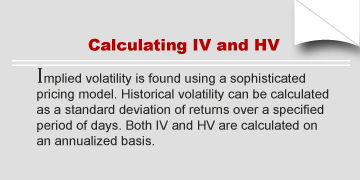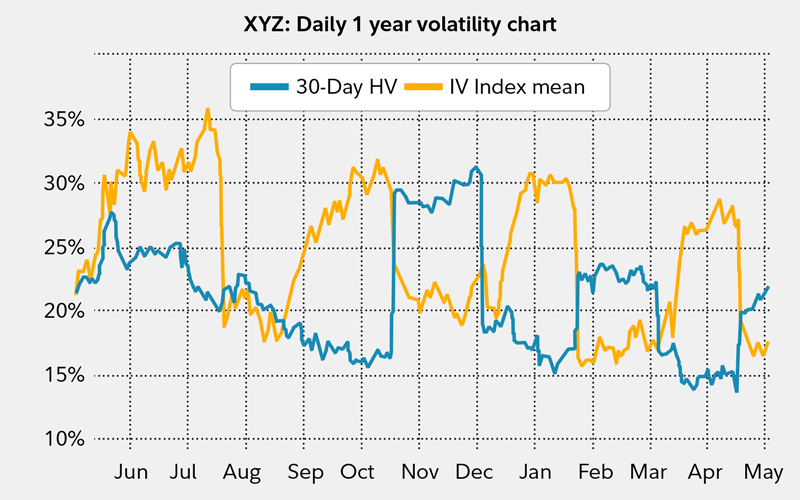Implied volatility can be a valuable tool for options traders to help identify stocks that could make a big price move, and to assist in determining if an option is cheap or expensive.
What is implied volatility?
Volatility is how much a price moves over a given period of time; a highly volatile stock is one that exhibits large price movements and a low volatility stock is one that does not move as much. For example, a stock that trades between $20 and $30 over a period of time can be said to be more volatile than another stock that trades between $24 and $26 over the same time frame.
IV is simply an estimate of the future volatility of the underlying stock based on options prices. This estimate can be a helpful tool when formulating your strategy—especially if you are targeting volatile stocks.
Additionally, an option’s IV can help serve as a measure of how cheap or expensive it is. Expectations for higher future volatility may result in relatively more expensive options prices, while expectations for lower future volatility may result in relatively less expensive options prices.
Don’t forget about historical volatility
Whereas IV is an estimate of future volatility, historical volatility (HV) is how volatile the underlying stock has been. Both measures may be used to estimate future volatility because, by inference, an option that has consistently been historically volatile might be expected to also be volatile in the future.
When you are considering a particular options contract and are evaluating its volatility, one helpful strategy may be to look at a chart of an option’s implied volatility compared with its historical volatility.
For instance, when IV has increased (or decreased) in the past, has it actually resulted in increased (or decreased) volatility for the underlying stock soon after (e.g., has an increase in implied volatility been followed by an increase in historical volatility)? Consider the chart below, where a recent increase in implied volatility (orange line) in mid-March was followed by an increase in observed historical volatility (blue line) in mid-April.

Implied volatility rises and falls, affecting the value and price of options

Exploding and imploding IVs
You can easily find an option's IV and the underlying’s HV on its options research page on Fidelity.com and in Fidelity Trader+™ Desktop, or by reviewing the options chain. To evaluate an option's IV, consider the current IV against its 1-month IV. You could also compare an option's 30-day IV against longer-term IV data, such as its 60-day IV, 90-day IV, 120-day IV, etc.
It's possible to search for options that have big increases or decreases in implied volatility with the help of a screener. On Fidelity.com, for instance, the options research page features an options screen, provided by independent options research company LiveVol, that identifies companies whose options have experienced the largest increase or decrease in implied volatility over the past 5 days.
Frequently, an option that has a very large increase in implied volatility (exploding IV) is one where the company of the underlying stock has an announcement forthcoming, such as an earnings report or another major company pronouncement. Of the top 10 screen results that appeared in the exploding IV screen on August 27, 2018, all 10 were scheduled to report earnings within the next 7 days. This suggests that companies reporting earnings will commonly experience an increase in implied volatility.
When IV rises, it may increase the value of an options contract and present an opportunity to profit with strategies such as long straddles and strangles.
A few tips
Generally, IV increases ahead of an upcoming announcement or an event, and it tends to decrease after the announcement or event has passed. So you may want to factor this in when analyzing an option's IV, especially for those options that are close to expiration.
Of course, a relatively high or low IV does not guarantee that an option will make a big move, or make a big move in a particular direction.
In addition to IV or HV, consider also utilizing Greeks to help measure an option's volatility, time decay, sensitivity to changes in the underlying stock, and more. Plus, an options probability calculator (which incorporates IV and can be found on an options research page) can help assess the likelihood of an underlying stock reaching a certain price. All these tools could deliver a powerful infusion to your strategy to help you make more-informed investing decisions.



